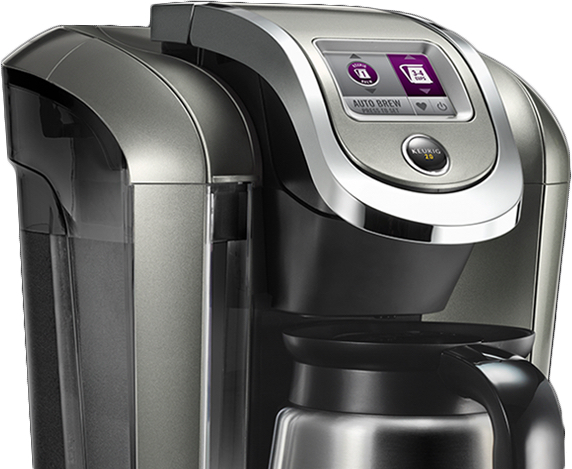
Satisfying the Craving for Convenience
By Brady Antonelli /// Opinions Editor
College student often seems synonymous with coffee addict. Many of us wake up with that first cup and reflexively refill it throughout the day simply as a survival instinct. We are constantly on the lookout for the easiest, fastest, cheapest and best cup of coffee. Keurig coffee is the epitome of convenience. Arguably, it takes the word convenience to a whole new level.
Traditional drip coffee makers, for those who aren’t avid coffee-drinkers, are relatively simple. You put water, coffee and a coffee filter in, then after ten or so minutes of odd, bubbling noises, you have a fresh pot of coffee waiting to make your morning bearable. Generally, the water is heated then dripped over the coffee grounds somewhat evenly. The water then slowly works its way through the grounds and into the pot, bringing with it that dark, caffeinated concoction.
Keurig, on the other hand, makes it even easier. The user simply has to put in a “K-cup,” press the button corresponding to the size of cup they have, and in under a minute (depending on the specific machine) you have a steaming cup of coffee. The general idea is that the water flows through a small hole in the top and through the filter and coffee already inserted in the cup. This is the same process as a traditional coffee maker, only less for the user to worry about. There are several other advantages of the Keurig machine. For example, you don’t have to worry about scooping the coffee or buying coffee filters, and you can choose from an extensive range of flavors and blends.
For Keurig users though, the effortlessness of the machine steamrolls every rule of good coffee. According to the National Coffee Association, to get acceptable extraction the water must be at least 195 degrees to 205 degrees. Unfortunately, for the sake of convenience, Keurig swings a near miss at only 192 degrees. This will inevitably produce an under-yielded, or weak, cup regardless of the coffee used.
Which brings us to the next coffee crime Keurig commits: the coffee. Ideally, some would argue, coffee is ground less than twenty minutes before brewing to preserve the oils. For normal people, that means the best taste will be somewhere in the ballpark of a week, which is why many connoisseurs buy whole beans. There isn’t much information on how long it takes K-cup coffee to be shipped, roasted, ground, packed, shipped again, sold and then used, but any rational person can assume that this process takes considerably longer than a week. All that time, the coffee is going quite stale.
Last on the list of Keurig’s atrocities is the fact that there is no change in the amount of coffee grounds per the amount of water used. When a user pushes the button to indicate the size of cup, they are choosing the amount of water that is going to be used regardless of the amount of coffee. More coffee results in a darker cup, and less coffee results in a lighter cup. Unfortunately, Keurig ignores this and simply uses varying amounts of water for the same amount of coffee, resulting in varying taste depending on the amount of water.
It’s not all about taste, either. Living in one of the most environmentally conscious cities in America, Lewis & Clark understands the important role we have in decreasing our impact on the earth. Keurig, also for the sake of convenience, uses a #7 plastic to manufacture their K-cups, which is non-recyclable. Estimates put the number of K-cups sold in 2013 at over eight billion. If set upright side-by-side, that would stretch around the earth almost 32 times.
Beyond taste and the environmental effects, there is also the risk of cancer with drinking 192 degree water that has been forced through plastic. To add to it all, since Keurig’s patent on K-cups expired, their new machine, Keurig 2.0, will not take K-Cups made by other companies. This has caused a lawsuit that is currently in progress.
Despite all the barbarities they have committed, Keurig is still growing in popularity, which may be a symptom of America’s craving for convenience rather than quality.
Subscribe to the Mossy Log Newsletter
Stay up to date with the goings-on at Lewis & Clark! Get the top stories or your favorite section delivered to your inbox whenever we release a new issue.

Leave a Reply